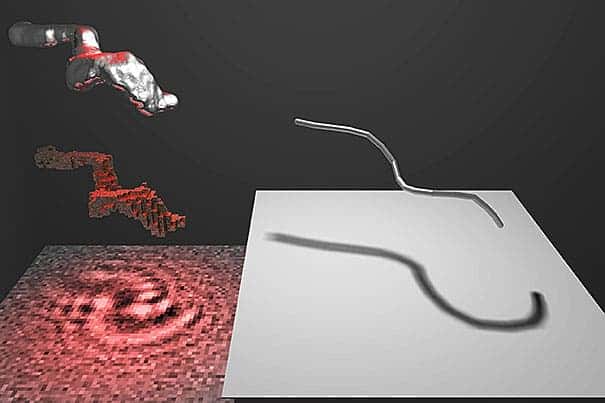Aside from being really cool and enabling wicked video game graphics, 3D imaging is also extremely useful in research, entering the labs as one of the most powerful tools in the 21st century.
Using an imaging technique known as high-speed holographic microscopy, Laurence Wilson, a fellow at Harvard’s Rowland Institute, created detailed 3D images of malaria sperm – the cells that reproduce inside infected mosquitoes. This could provide very valuable information in fighting the disease.
“The working assumption was that this structure moved through a consistent clockwise beating,” Wilson said. “But what we found was, if you look at the malaria swimming, it doesn’t just move in a ‘right-handed’ way — it actually turns out to be a very general motor. “The only way we could identify this was because we could see the 3-D structure,” he continued. “We could never do that before, and we found that there’s a whole zoo of shapes and waveforms it uses. What stuck out, however, was the idea that it does a right-handed stroke, then a left-handed stroke — so it relies on the strict alternation between the two.”
The main thing this 3D representation does is provide more information about how these cells move, and indirectly, how other similarly built cells travel (like cilia in the lungs, for example). The main thing, however, is to develop new strategies to combat malaria. For many researchers like Wilson, the structure of Malaria is an extremely interesting and useful to understand topic.
“That’s how you get a sperm tail beating, or cilia beating in your lungs,” Wilson said. “The nice thing about malaria, however, is that from a mechanical point of view, it’s relatively primitive. Unlike other model systems we looked at — all of which have a head or cell body attached — malaria has no accessory mechanical structures. There’s only a cell membrane and some DNA arranged along its length.”
Holographic microscopy is not exactly a novel technology. It basically creates numerous 2D images and them stacks them above each other to develop a three dimensional model. Because the data is acquired so rapidly, the image is sampled thousands of times per second, thus enabling imaging of things like this malaria sperm.
“Holographic microscopy has been used for some time, but no one has tried to do exactly this sort of imaging before,” Wilson said. “No one has ever used it to look at the shape of something in this way, or in the same level of detail that we have.”
While the study provides a very clear picture yet of how such cellular motors work, Wilson and his team are already working on ways to build on this work, figuring out what can goes wrong in the human body and how.
“The hope is if we know how this malaria sperm works, then when similar cellular motors go wrong, we can say why they’ve gone wrong,” Wilson said. “When these things go wrong in the human body, it can lead to problems like infertility and polycystic kidney disease — all sorts of unfortunate things can happen if these structures don’t work properly.”
More info and a video on MIT News.










